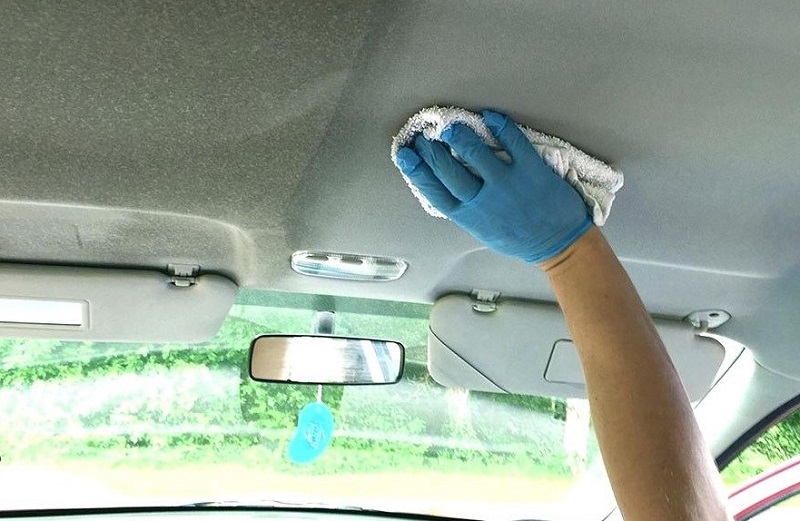The automotive term for your car’s ceiling is a headliner. The headliner is a soft, foam-like pad covered with a material like vinyl, leather, suede, or fabric which is then glued to a backing molded in the shape of the roof. Cleaning a headliner is not like cleaning your car’s carpeting or seats. Hard scrubbing or over-wetting can cause permanent damage. Below are some tips that you can use to clean your car’s ceiling, or headliner. The most important cleaning tip to remember, no matter what you are cleaning, the whole surface, a spot, or a stain, is to be gentle.
How Does the Headliner Get Dirty in the First Place?
In most cases a headliner gets dirty from every day use, Things like dust, car exhaust from traffic, and tobacco smoke (if you or a passenger is a smoker). If you have young children, your headliner may have acquired some small footprints or other marks. Food or pet odors and the uncontrolled fizzing of soda pop containers are two more things that may have dirtied up your headliner.
Supplies Needed to Clean a Car Ceiling

- Several microfiber cloths
- Soft bristle brush
- Foaming automotive upholstery cleaner
- Deodorizer spray
- Vacuum or wet/dry shop-vac
- Steamer cleaner with an upholstery attachment (as a last resort only)
General Surface Cleaning
If the headliner doesn’t have visible staining or markings, using a vacuum alone will get the job done. If there is an odor involved, you can address it one of two ways. You can lightly spray the headliner with a household deodorizer or spray the deodorizer on a microfiber cloth and then wipe the headliner. Or two, you can use a foaming upholstery cleaner. When applying either a deodorizer or a foaming cleaner, use it sparingly. Soaking the headliner can cause its adhesive to deteriorate and result in separation of the finish material and the backing.
Two good foaming upholstery cleaners are Adam’s Multi-Use Foaming Cleaner and Chemical Guys Foaming Citrus Cleaner. Spray a thin layer of the cleaner over the entire surface and allow the bubbles to do their work. If there are dirtier areas, you can lightly brush them with your soft bristle brush. To finish, use a wet/dry vac to vacuum away any leftover cleaner.
Spot Cleaning

For minor stains, a soft brush or microfiber cloth and a cleaning solution may be all you need. The cleaner that you use will depend on the makeup of the stain. Alcohol works well on oil-based stains (ink, makeup, crayon, etc.), upholstery cleaners work best on water-based stains (coffee, soda, etc.). Don’t be aggressive. Don’t wipe the stain, it may spread it further. Gently dab at the stain and then use a clean cloth to remove it. Be willing to repeat the process until the entire stain is dissolved. Again, do not over-wet the area.
Steam Cleaning as a Last Resort

Sometimes a headliner is so dirty that it is to the point that you are considering replacing it. Give steam cleaning a try. Keep the steamer attachment moving slowly and evenly and do not hold the steamer in one place for too long. Try to use as little liquid as possible. When finished, open the car windows and use a fan to blow air through the car. It may take 24 hours to dry completely. The steam, combined with the heat, may cause the adhesive holding the headliner together to give way. But the again, a steam cleaning if it works, is better than the hassle of replacing the entire headliner.
Helpful YouTube Videos
To better understand these cleaning processes, you may want to watch the YouTube videos below:
Conclusion
The headliner in your car is there for a couple of reasons. Obviously it finishes the inside-look of the car. It also blocks out road noise and insulates from both heat and cold temperatures. It also collects dust and requires periodic cleaning. These tips will help you to retain both the look and function of your car’s ceiling, or headliner.
